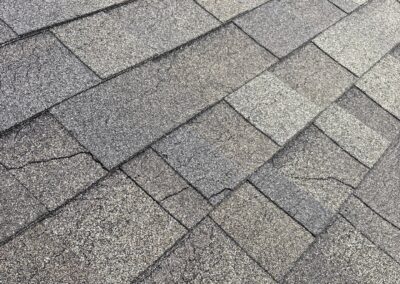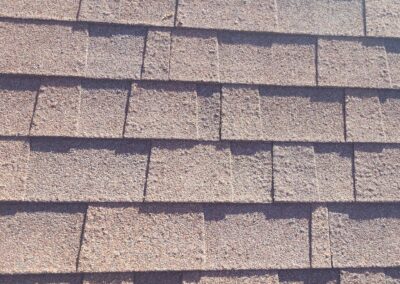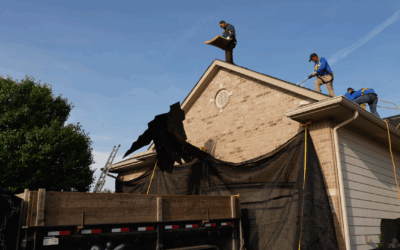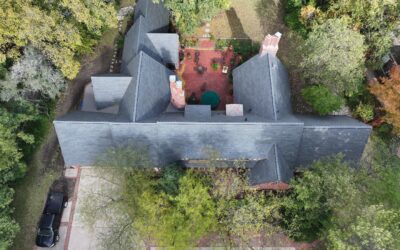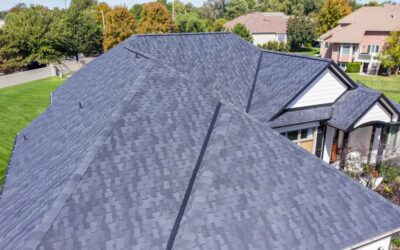What Are Asphalt Shingles and What Do They Do?
Asphalt shingles are overlapping roof coverings made of a fiberglass mat, a layer of asphalt, and mineral granules. They are designed to shed water off the roof while withstanding impacts and UV radiation. Approximately three out of every four homes are covered with asphalt shingles, making them the most common pitched roof covering. What makes asphalt shingles so popular? It’s a balance of durability, cost, and appearance.
Describing a roof as having asphalt shingles is like describing your shoes as having shoelaces: it may rule out flip-flops and sandals, but it leaves hundreds of other possibilities. This article focuses primarily on architectural asphalt shingles on the field of the roof, although there are myriad asphalt shingle types such as 3-tab, hip and ridge shingles, starter courses, along with dozens of shingle manufacturers.
These are the individual shingle pieces you’ll see on a typical asphalt shingle roof — the starter course at the eaves, the field shingles across the slopes, and the hip & ridge caps at the peaks.
Shingle Components on an Architectural Asphalt Shingle Roof
- Field Shingles: Field shingles comprise the majority of an asphalt roof’s surface. They are the shingles that protect the body of your roof. Think of them like an asphalt onesie that covers everything but a few details, like your hands and face.
- Hip & Ridge Caps: If field shingles are a onesie, hip and ridge caps are gloves and shoes. Valleys protect areas where two slopes meet to drain runoff, while hip and ridge caps direct water runoff toward the slopes it will follow. Hip and ridge caps are typically a different product than field shingles, and their service life inversely correlates with a roof’s pitch. So, the steeper your roof, the shorter your ridge cap’s lifespan (See What Are the Benefits to a High Profile Hip and Ridge Shingle for more information.) Hip and ridge caps are fastened to the slopes that create the ridge. Steep slopes pull it taut like a bed sheet; unlike a bed sheet, this can cause cracking at the middle, which is amplified by the pull of roof’s pitch.
- Starter Course: A starter course is the first row of shingles installed on the house’s perimeter before the main course. It acts as the roof’s “grip strip,” sealing the roof’s perimeter against wind uplift and providing a straight, water-resistant line for the first shingle course. Some roofing systems use a flipped 3-tab shingle as a starter course, but dedicated starter courses are always recommended. Starter failure is rarely the cause of roof leaks, just like underlayment is rarely the cause of roof leaks: odds are, if water reaches the starter or underlayment, something else has already failed.

Field Shingles
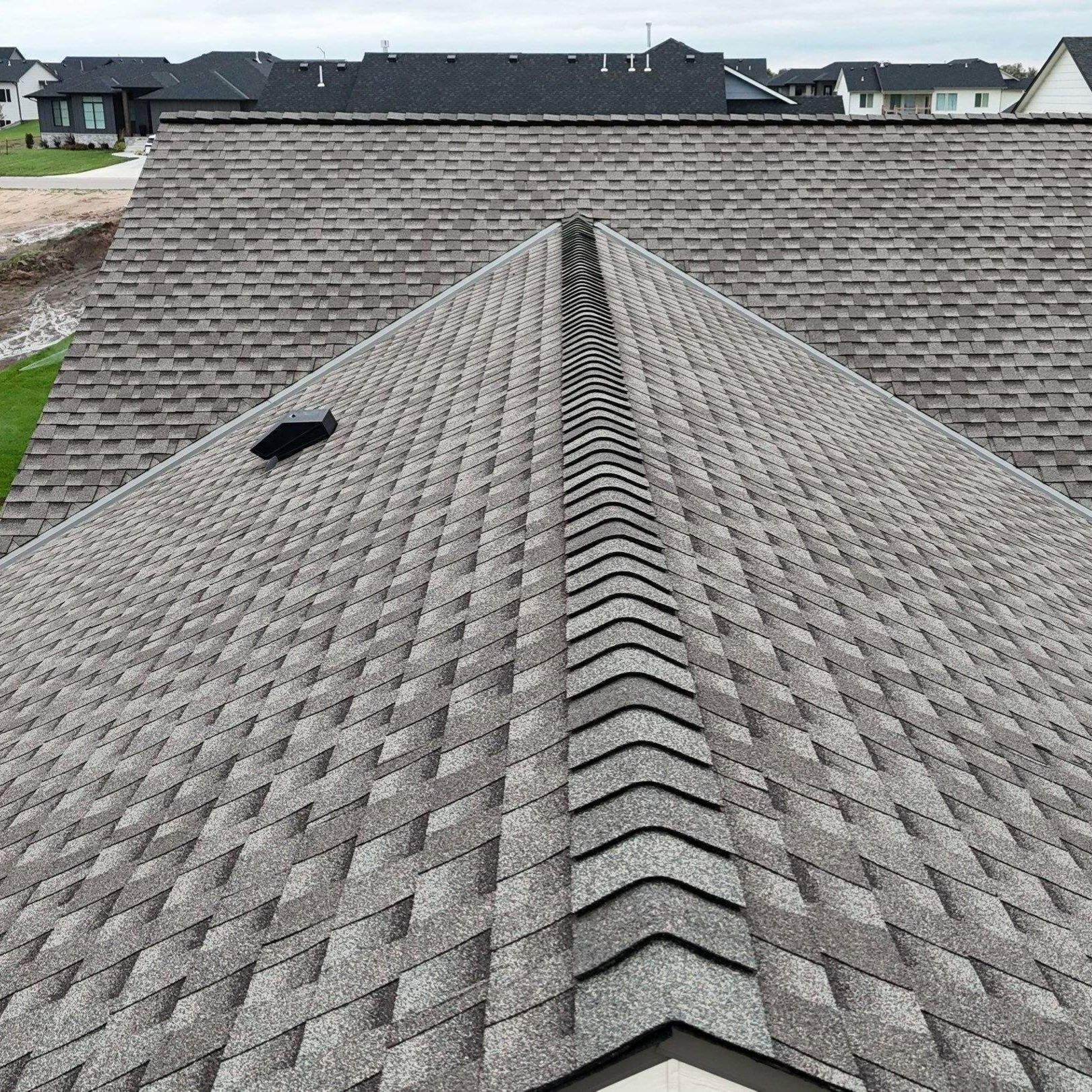
Ridge Caps
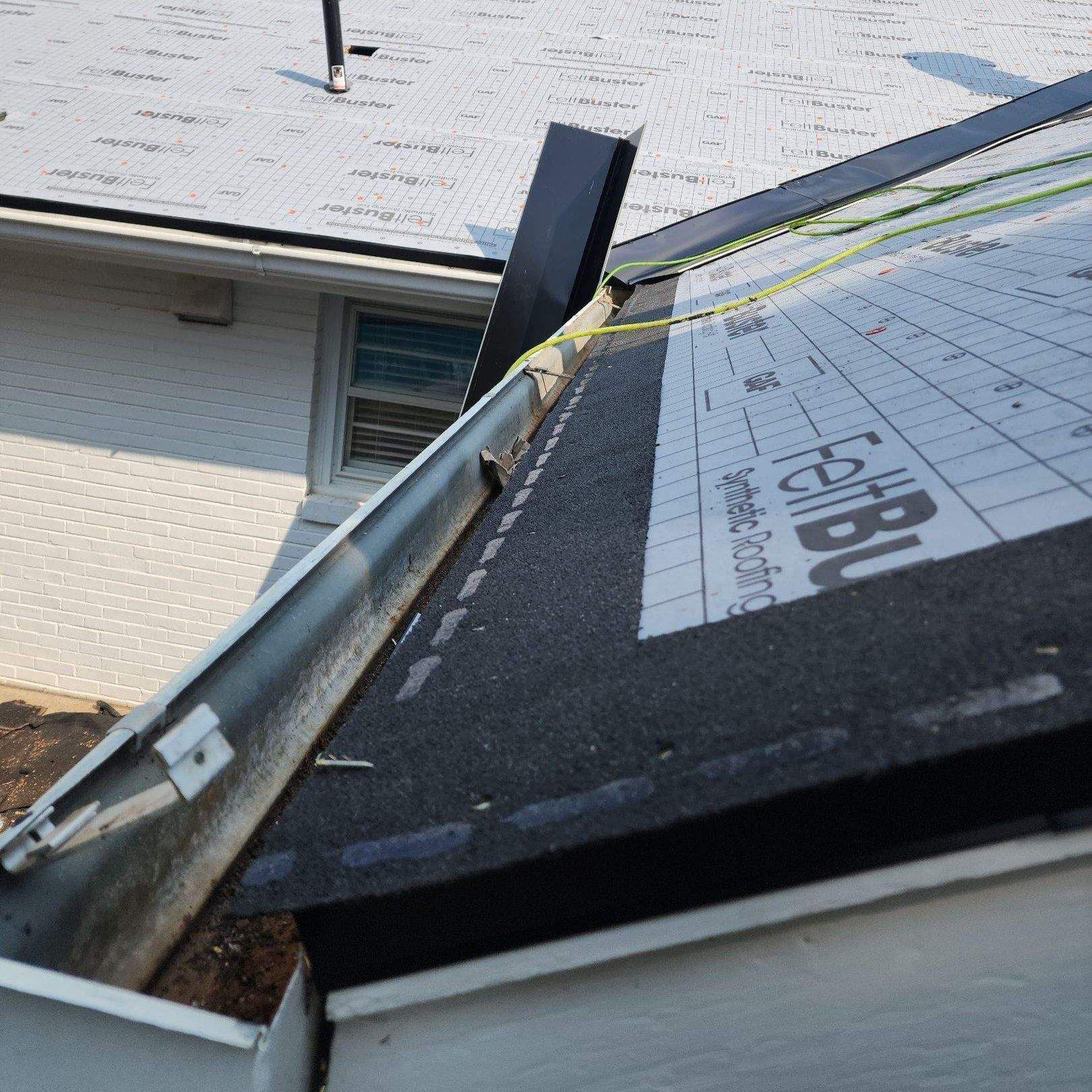
Starter Course
Expected Service Life of Asphalt Shingles
The service life of a roof system is functionally the same as the service life of its shingles. This can vary dramatically depending on the manufacturer, installation quality, and climate they are installed in. In Kansas, where freeze-thaw cycles and hail are common, a well-maintained and well-installed asphalt shingle roof can last for 20-25 years.
0-5 Years: New Installation – Evaluating for Correct Installation
- Insufficient Overlap: Shingles overlap the course below them. Water can flow between two shingle courses because those courses overlap the shingles below. This constant overlap is what allows water to shed from the roof without infiltrating. When shingles don’t overlap by approximately 6”, either with the shingle or starter course below, water has an avenue to enter.

- Joined or Aligned Horizontal Joints: Joint issues are visible while looking up or down the slope. If two adjacent shingles connect or have no visible offset, water has an avenue for infiltration. This is called “Laddering.” Picture rain falling down a roof like beads of water on glass. Each shingle should interrupt and redirect that flow. When two horizontal joints line up, water has a runway down, which can cause it to flow beneath the shingles.
- Incorrect Exposure: Exposure refers to the amount of the shingle that is exposed to the elements, not overlapped or obstructed. GAF’s Timberline HDZ and ASII shingles, for example, have a specified exposure of 5 5/8”. One shingle installed with improper exposure will cause the succeeding course to have improper exposure, which can create vulnerabilities in the slope.
- Improper Coursing with Flashing: Most common where step flashing integrates with shingles (see our corresponding article covering step flashing to learn more), this can also occur when field shingles overlap the top of pipe boots or heater flue flashing because they are not cut away.
- Field Shingles Along Ridge: Hip and ridge caps are specifically designed to cover the ridge of the roof by bending over it. Field shingles are more likely to crack in the middle, obstruct ridge vent baffles, and blow off.
- Missing Starter Course: Starter courses are typically installed at the eaves and rakes of a roof. They function as both a redundancy to prevent water infiltration and to secure shingles on the roof’s perimeter. Lifting the first shingle course and only seeing underlayment and drip edge suggests that no starter course was used.
- Incorrect Fastening Pattern: Roofing nails are typically 1 ½” long so that they can reach the roof deck, but they require a manufacturer-specified fastening pattern within a designated nail line. If the field shingles’ edges lift when pulled up, the fasteners may not have been distributed properly. Over time, this can cause shingle blowoffs.
- Shingles on Slopes with a Pitch of 2:12 or Lower: Asphalt shingles are designed to shed water – they are not waterproof. With a pitch of 2:12 or lower, water can drain slowly and even pond, requiring a waterproof covering like modified bitumen or TPO instead. 3:12 slopes with asphalt shingles often require a waterproof membrane like Ice and Water Shield below to prevent any slow-draining or standing water from reaching the roof deck.
- Exposed Nail Heads: Because shingle courses overlap the nail zone of the course below, a properly installed roof should not have exposed nail heads.
- Poorly Cut Shingles: As shingles are installed up to a ridge or rake, they need to be trimmed to fit, usually with a hook knife or sharp box cutter. When a dull blade drags across the surface or the cut is uneven, it can damage the asphalt layer and pull granules loose, leaving rough edges. This is mostly cosmetic, though it’s a sign of rushed workmanship and an unnecessary source of degranulation.
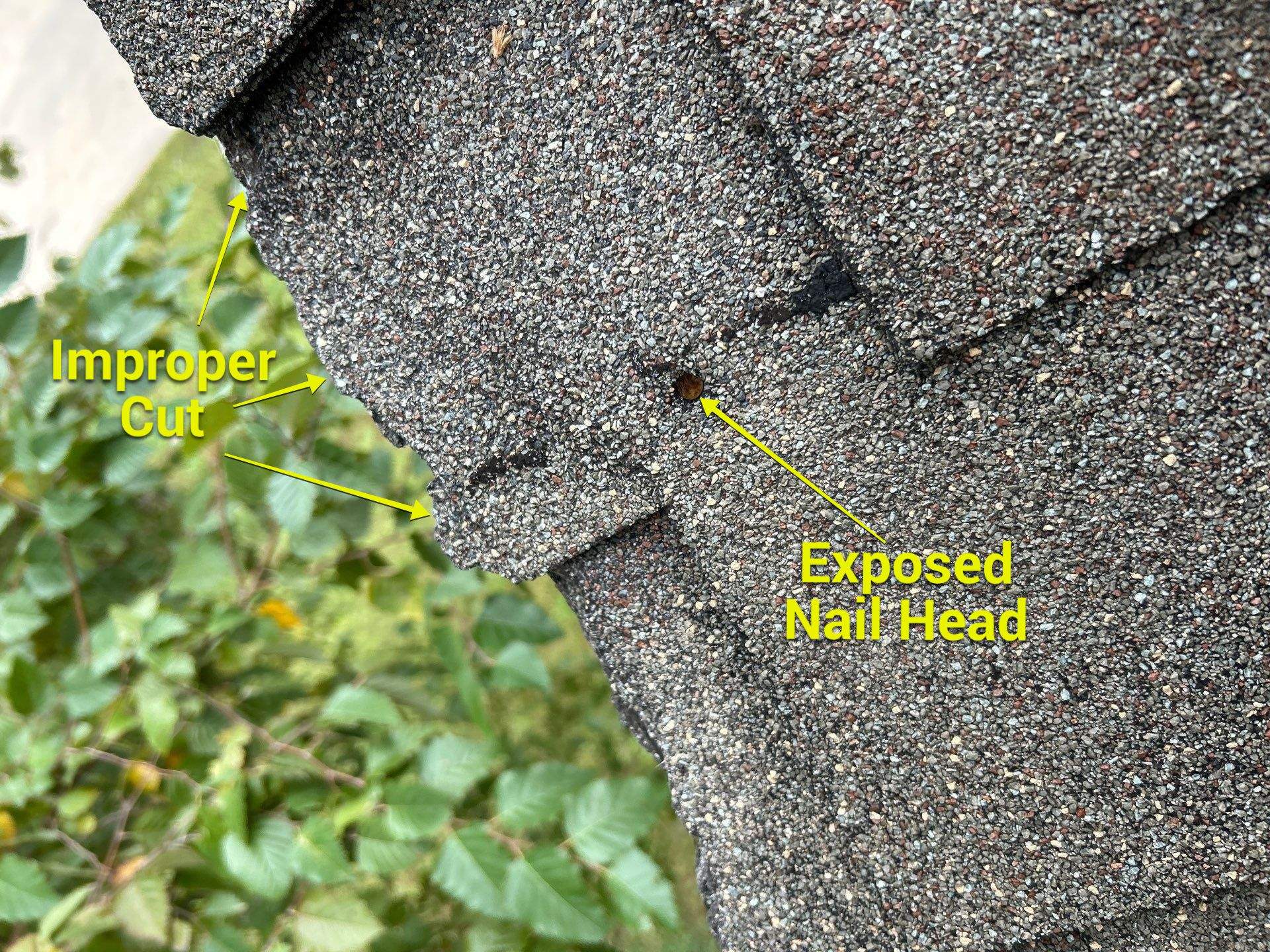
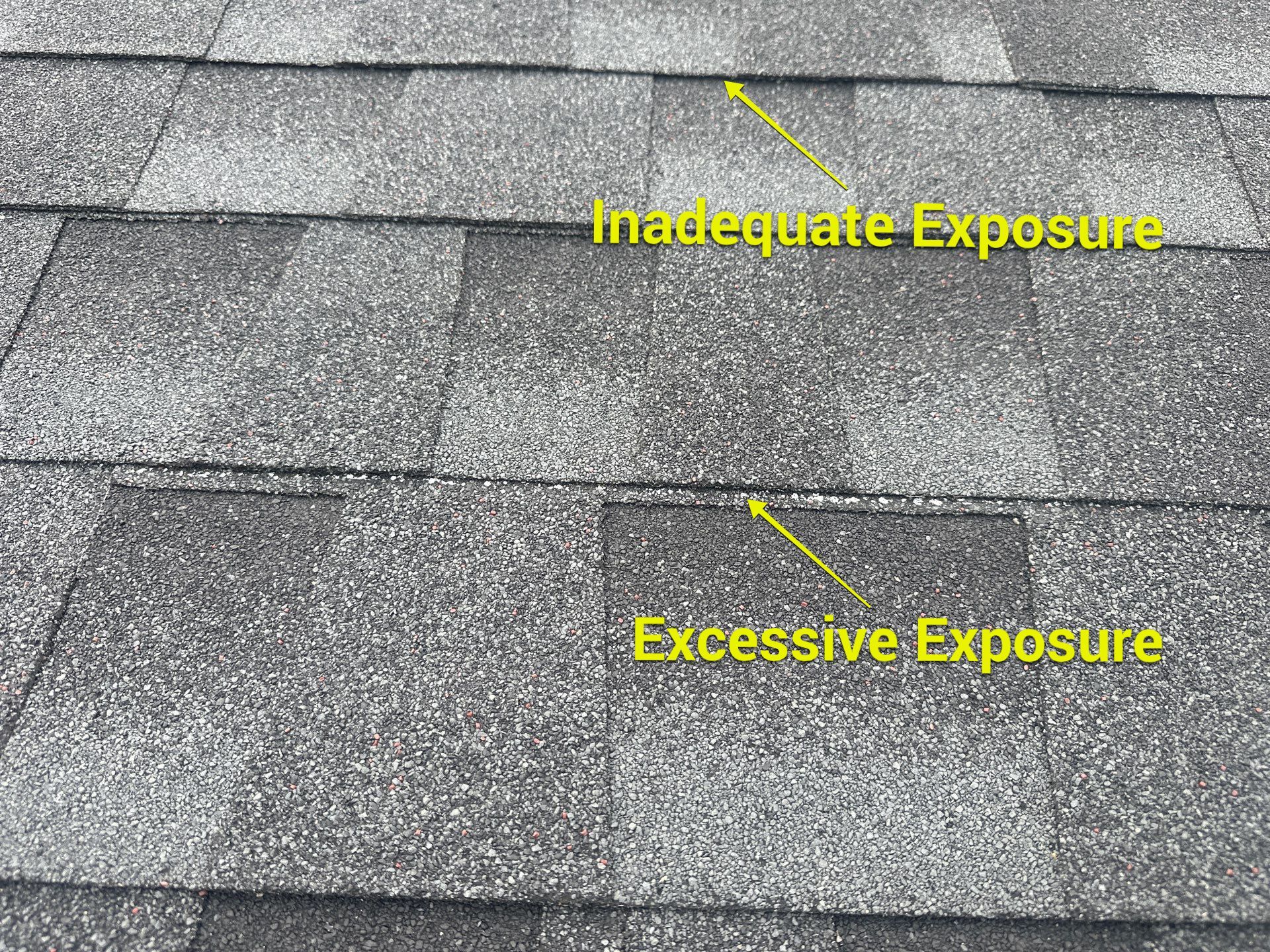
5-20 Years: Normal Weathering – What to Monitor
A few years after the roof is installed, it may not be nor look “new,” but it should have many years of service life remaining. At this stage, the shingles are not likely to need urgent repairs. Aging asphalt shingles start to look their age before they act it.
- Granule Loss: This contrasts acute granule loss, which is localized and can produce impacted granules or complete granule loss in the areas. A few granules in gutters or near downspouts after heavy rain are normal and expected. Gradual, uniform granule loss is like candied sprinkles falling off an ice cream cone as you eat it: it’s a sign that you have a lot of sprinkles.
- Color Fading: The combination of gradual granule loss and exposure to UV radiation will cause the color to fade over time. This is purely cosmetic – the shingle performance is not affected. Sun-bleached patio furniture fades similarly. However, darkened shingles on the roof that persist after the roof has dried is a sign that water may be trapped underneath the shingles.
- Staining: Fading is typically uniform on a slope. For example, south-facing slopes that receive the most sun exposure are likely to fade more quickly than north-facing slopes that receive less sun exposure. Staining is more localized and is often a result of algae or iron oxide from rust on metals above, like flashing. As rain carries these particles downslope, it can leave streaks or stained patches on the shingles.
Maintenance: Cleaning. Field shingles that are stained or host algae growth may be cleaned to improve their appearance. While algae can cause moisture to permeate the asphalt, staining from rust doesn’t typically affect the shingles’ ability to keep water out. Unless your roof hosts algae growth, cleaning is elective at this point.
20-25+ Years: Failure & Replacement – Knowing When It’s Time
The functional life cycle of a roof component is determined by its ability to keep water out. The transition from normal aging to concerning wear isn’t always clear. To clarify what these thresholds are, we created an inspection checklist to standardize our recommendations, ensuring that suggested only when it’s necessary. Similar to how an insurance adjuster defines “totaled” on a car, we only recommend component replacement when the cost to replace a component or roof is less than the potential cost of damages over the next 12 months.
Every roof reaches the end of its life eventually. As composite products, when one layer on asphalt shingles fails, it accelerates the deterioration of the other two. To prevent this, a shingle with a failed layer needs replaced.
Based on our experience identifying and fixing roof leaks on over 13,000 homes and buildings, here are our criteria for when we recommend replacement of architectural field shingles:
- Widespread or Acute Degranulation: Gradual granule loss eventually crosses the threshold from acceptable and expected to recommended replacement. This can occur naturally, or it can be expedited by a hailstorm or a source of abrasion (e.g., frequent foot traffic and tree branches). The asphalt and fiberglass layers of an architectural shingle will deteriorate quickly without granules to protect them from impacts and UV radiation.
- Exposed Fiberglass Matting: The fiberglass mat below the granules is not designed to withstand UV radiation. Hail impacts can fracture the asphalt layer and exposure the fiberglass matting beneath, which will deteriorate it and provide an access point for water infiltration.
- Shingle Blowoffs: While blowoffs can occur earlier in a roof’s life if the shingles aren’t fastened correctly, multiple shingle blowoffs at different locations suggests that the fasteners are no longer secured to the roof deck due to thermal expansion and contraction.
- Cracking/Splitting: Cracked shingles have a hairline fracture, while split shingles have a clean break. Unlike a bone, neither of these issues repair themselves. Hairline cracking across the granules and asphalt layer does not immediately allow water to infiltrate if the fiberglass mat remains intact. A cracked shingle has split through the asphalt layer and likely the fiberglass mat as well.
- Zippering: Zippering looks exactly like it sounds: a diagonal line where shingles have lifted in sequence, as though the wind pulled the shingle corners up one by one. This often starts when the adhesive strips that bond each shingle course to the deck fail from thermal expansion. Zippered shingles are liable to blow off in large sections without prompt repair. It can also be caused by ladder racking shingles during installation, or installing shingles straight up the roof rather than through overlapping courses diagonally up the roof.
- Blistering: Blistering is the result of either a) overheated shingles due to improper attic ventilation, or b) defective shingles. It is rarely, however, an expected outcome for aging shingles. If you notice blistered shingles, that means the volatiles in the asphalt have begun to release due to excessive radiant heat from the attic and ambient heat from the roof, hence its term of art, “thermal blistering.”
Frequently Asked Questions (FAQ)
Can asphalt shingles be painted?
Absolutely not. Painting an asphalt shingle roof will nullify any workmanship or manufacturer warranties it may have. Coatings, which are gaining in popularity as an inexpensive option to increase a roof’s life expectancy, present similar problems: warranty nullification, trapping infiltrated moisture under the coating, and hiding early failure cues, making diagnostic inspections much more difficult.
How are asphalt shingles made?
A fiberglass mat is saturated with hot asphalt that binds with fillers and creates a flexible water-resistant sheet. The sheet is pressed with mineral granules, then cut and shaped into the shingles you see on your roof.
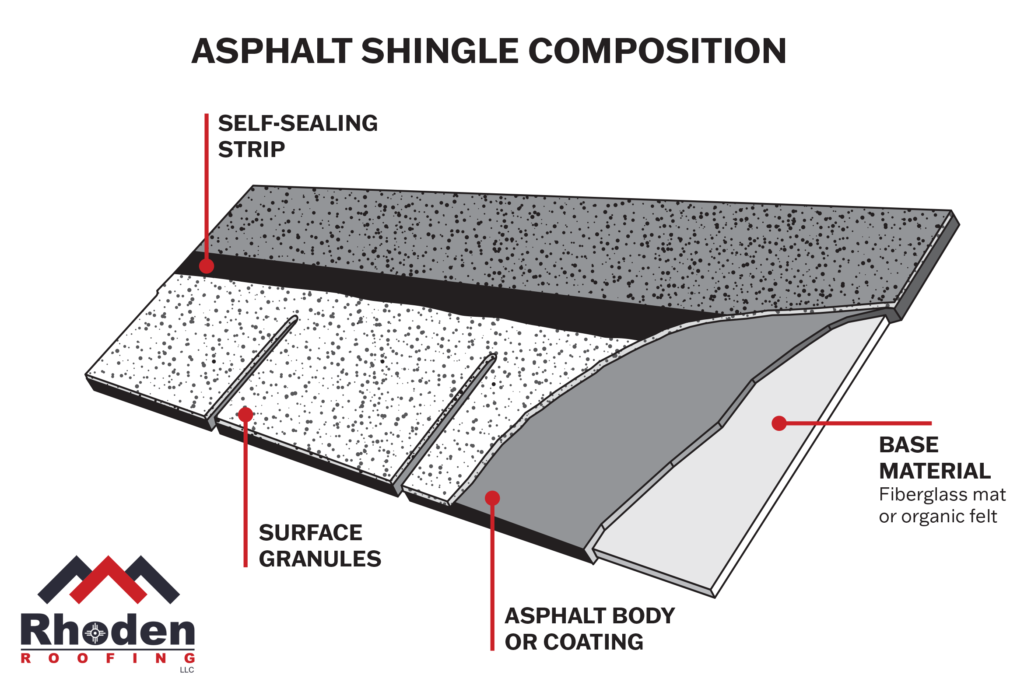
See “What Are Composite Shingles Made From?” to learn more.
What is the best shingle brand?
We have installed asphalt shingle roofs with products from many different shingle manufacturers. Before deciding on a shingle brand, we recommend asking your roofing contractor the following questions:
- What is the manufacturer’s product warranty?
- Are the manufacturer’s regional reps responsive?
- Does the manufacturer have a history of product defects?
- Is the installer capable of offering the manufacturer’s best warranties?
GAF, for example, offers a 50-year product warranty when its qualified products are installed by a Master Elite contractor. A contractor’s experience installing a brand is often more important than the brand itself.
Can I reroof over existing shingles?
Local building code in Sedgwick County limits the number of roof layers to two. Many manufacturer warranties limit the number of roof layers to one – the layer they are warranting. Removing all existing shingle layers allows the deck to be inspected, ensures proper fastening, and prevents unnecessary loading on structural members.
This article is part of our ‘Roof Component Inspection & Service Life’ Series. Learn more about:
Flashing
Roof Vents


